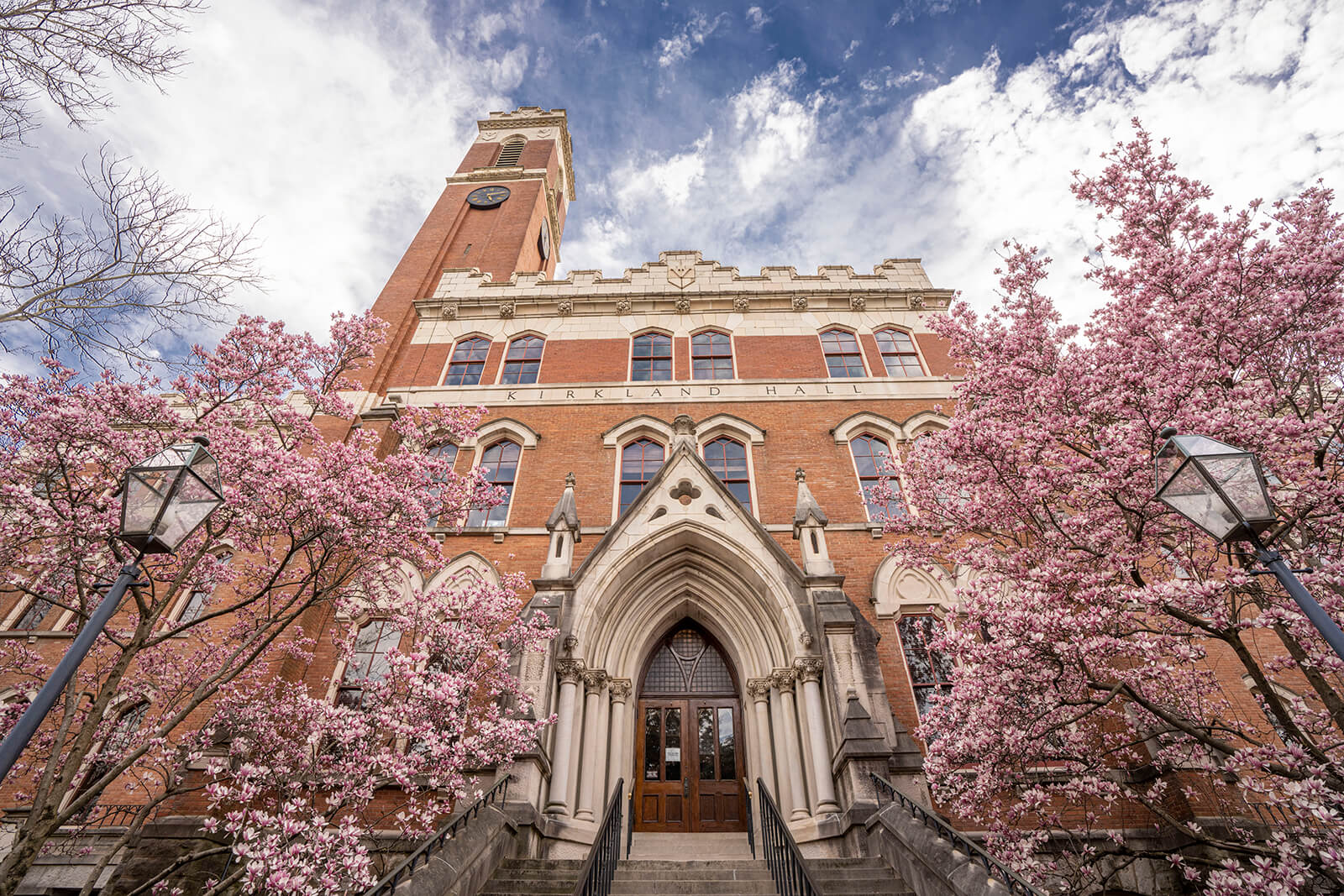It’s hard to imagine a more iconic campus symbol than Kirkland Hall—no doubt due to its enduring place in Vanderbilt’s history.
Known as “Main Building” at its dedication in October 1875, the structure was exactly that—it housed all the university’s classrooms and laboratories as well as a library, museum and chapel. Architect William Crawford Smith, who later designed Nashville’s Parthenon, was responsible for its double-towered, Victorian Gothic design. It was one of only 10 buildings in the original construction plan for campus.
A devastating fire broke out in 1905. “The building burned for two hours, from the top downward, as frantic students carried or tossed out books and lab equipment from the lower floors,” wrote Paul Conkin, Distinguished Professor of History, Emeritus, in Gone with the Ivy, his 1985 history of Vanderbilt. “The beloved clock in the south tower was engulfed in flames but survived just to the noon hour, struck a desperate 30 times, and then fell into the rubble.”
Reconstruction began immediately, with donations pouring in from current students, alumni and Nashville citizens amounting to more than $50,000. The structure was rebuilt in an Italianate style with a single 170-foot tower with a four-faced clock. The children of Vanderbilt faculty who lived on campus organized a fundraising effort to replace the clock’s bell, which bears the inscription: “Gift of the children of Vanderbilt University—1906—Ring in the Nobler Mode of Life.” Steel and concrete replaced wood in the reconstruction, and in 1907, the university reopened the newly named “College Hall.”
The building was known by many names—Main Building, Old Main, University Hall and College Hall—before it was renamed Kirkland Hall in 1937 in honor of Vanderbilt’s second and longest-serving chancellor, James Hampton Kirkland, and his wife, Mary Henderson Kirkland.
In September 2021, the university announced that Kirkland Hall—for decades used as the main administrative building—would undergo a significant renovation reflective of Vanderbilt’s purpose and commitment to excellence. Currently underway, the renovation aligns with FutureVU’s campus planning framework and its core themes, which include accessibility and inclusion, connectivity and community enhancement, and sustainability. Kirkland Hall’s last major renovation was in 1988.
“We want to preserve and accentuate the historic grandeur of one of our most treasured campus buildings while transforming its interior spaces to support the functional and aspirational goals of our university community,” Chancellor Daniel Diermeier said.
Learn more about the 2013 refurbishment of the Kirkland tower clock.
